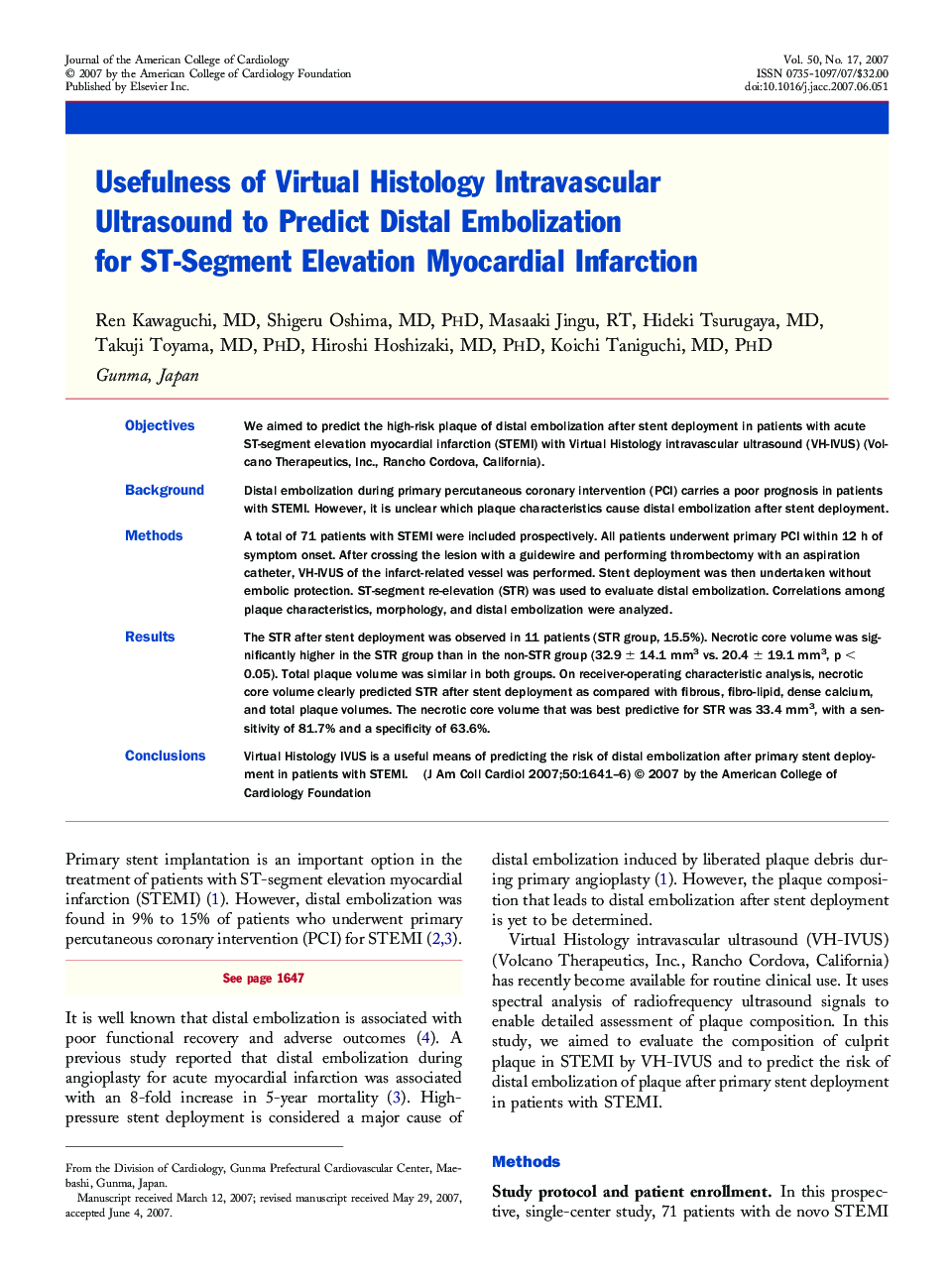| Article ID | Journal | Published Year | Pages | File Type |
|---|---|---|---|---|
| 2953112 | Journal of the American College of Cardiology | 2007 | 6 Pages |
ObjectivesWe aimed to predict the high-risk plaque of distal embolization after stent deployment in patients with acute ST-segment elevation myocardial infarction (STEMI) with Virtual Histology intravascular ultrasound (VH-IVUS) (Volcano Therapeutics, Inc., Rancho Cordova, California).BackgroundDistal embolization during primary percutaneous coronary intervention (PCI) carries a poor prognosis in patients with STEMI. However, it is unclear which plaque characteristics cause distal embolization after stent deployment.MethodsA total of 71 patients with STEMI were included prospectively. All patients underwent primary PCI within 12 h of symptom onset. After crossing the lesion with a guidewire and performing thrombectomy with an aspiration catheter, VH-IVUS of the infarct-related vessel was performed. Stent deployment was then undertaken without embolic protection. ST-segment re-elevation (STR) was used to evaluate distal embolization. Correlations among plaque characteristics, morphology, and distal embolization were analyzed.ResultsThe STR after stent deployment was observed in 11 patients (STR group, 15.5%). Necrotic core volume was significantly higher in the STR group than in the non-STR group (32.9 ± 14.1 mm3vs. 20.4 ± 19.1 mm3, p < 0.05). Total plaque volume was similar in both groups. On receiver-operating characteristic analysis, necrotic core volume clearly predicted STR after stent deployment as compared with fibrous, fibro-lipid, dense calcium, and total plaque volumes. The necrotic core volume that was best predictive for STR was 33.4 mm3, with a sensitivity of 81.7% and a specificity of 63.6%.ConclusionsVirtual Histology IVUS is a useful means of predicting the risk of distal embolization after primary stent deployment in patients with STEMI.
